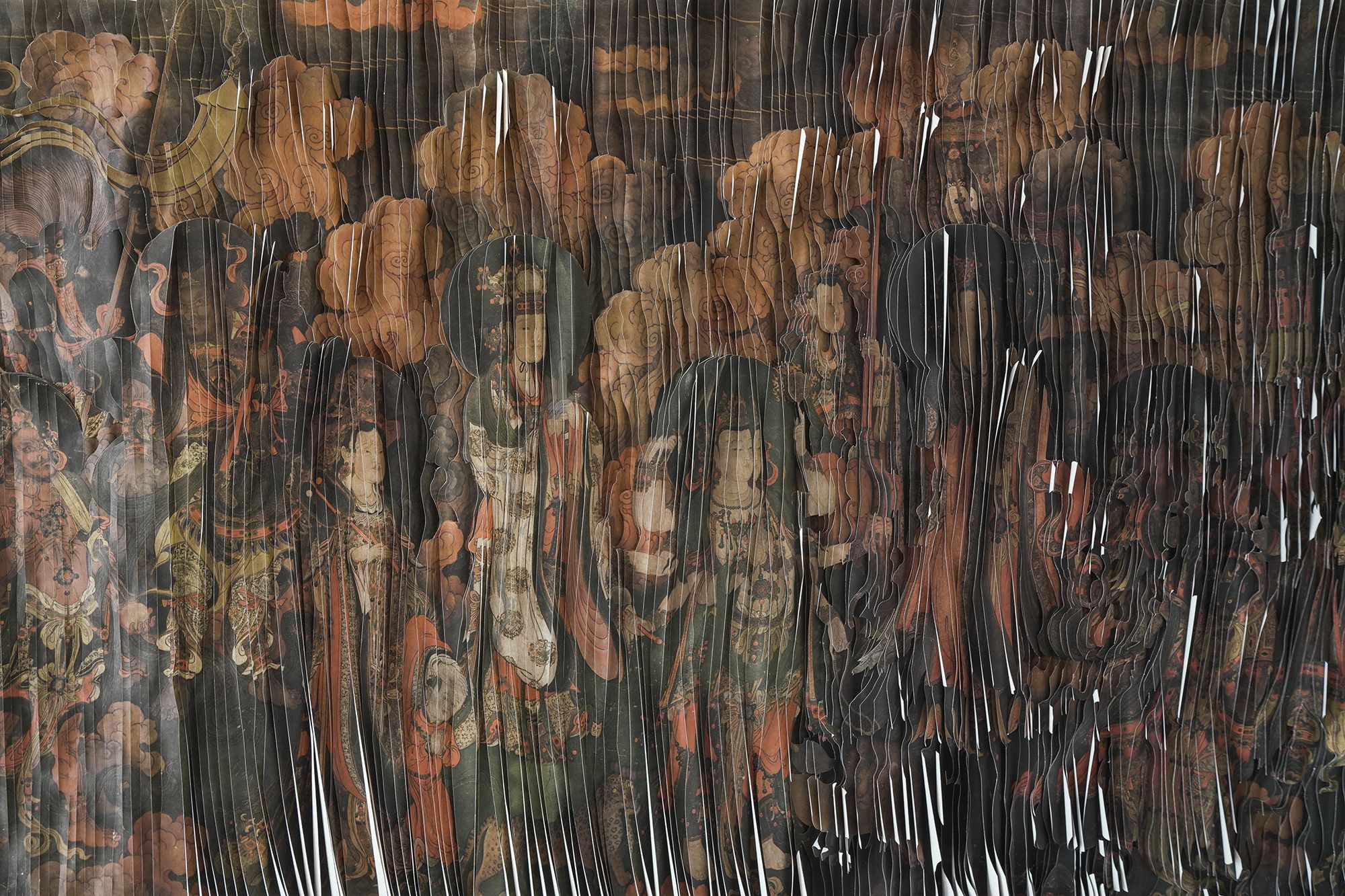Resurrecting the Arts of China's Dragon Scale Bookbinding

In Beijing in late January, the temperature was still minus -10 degrees Celsius. There are few people on the road. At 10 o'clock in the morning, on the 11th floor of a commercial building in Yizhuang, Beijing, Zhang Xiaodong lit a pillar of incense in his studio. A light fragrance of sandalwood filled the room. He sat in front of the rattan chair by the floor-to-ceiling windows, holding a cup of freshly brewed Pu'er tea, and looking at the unfinished work in thought.
Zhang Xiaodong's "Dragon Scale Diamond Sutra"
Zhang Xiaodong's "Dream of Red Mansions"
Zhang Xiaodong's "Dream of Red Mansions"

Zhang Xiaodong is a big fan of paper-made books. When e-books changed people's reading habits, he began to think about the printed books. When he was in college, by chance, a book with scale-like binding from the Tang Dynasty appeared in front of his eyes and got his attention. After ten years of research, he re-studied the ancient book binding skills that had been lost for more than one thousand years.

Now, he is an ancient book artist for scale-like binding and an heir of Intangible Cultural Heritages.Major works: "Scale-like Binding in Diamond Sutra", "Dragon in Red Chamber Dream" and so on.
Scale-like binding first appeared in the Tang Dynasty, which is an important form of transition from scroll to album pages. It is based on long paper, and the pages are staggeringly pasted on the base paper according to a certain proportion of scales. When they roll up, they look like scroll books, but when unrolled, the pages are orderly arranged like scales, so it is called “scale-like binding".
When the dragon scale is unfolded, the first thing that catches the eye is a complete picture. Paintings are more attractive to us than words. Then I open the book, and every page is staggered. First of all, I see that the picture is slowly disappearing, and a new picture is formed every time you turn over. Another slow picture is presented, so it is especially easy to feel the changes in time and space. In the process of reading, this kind of dialogue with the saints and sages will make you feel the most direct communication between you and the author.
The National Intangible Cultural Heritage List is a list of intangible cultural heritage approved by the State Council of the People's Republic of China and confirmed and announced by the Ministry of Culture and Tourism. The list of intangible cultural heritage is a way to protect intangible cultural heritage. China has become the country with the most intangible heritage in the world.
